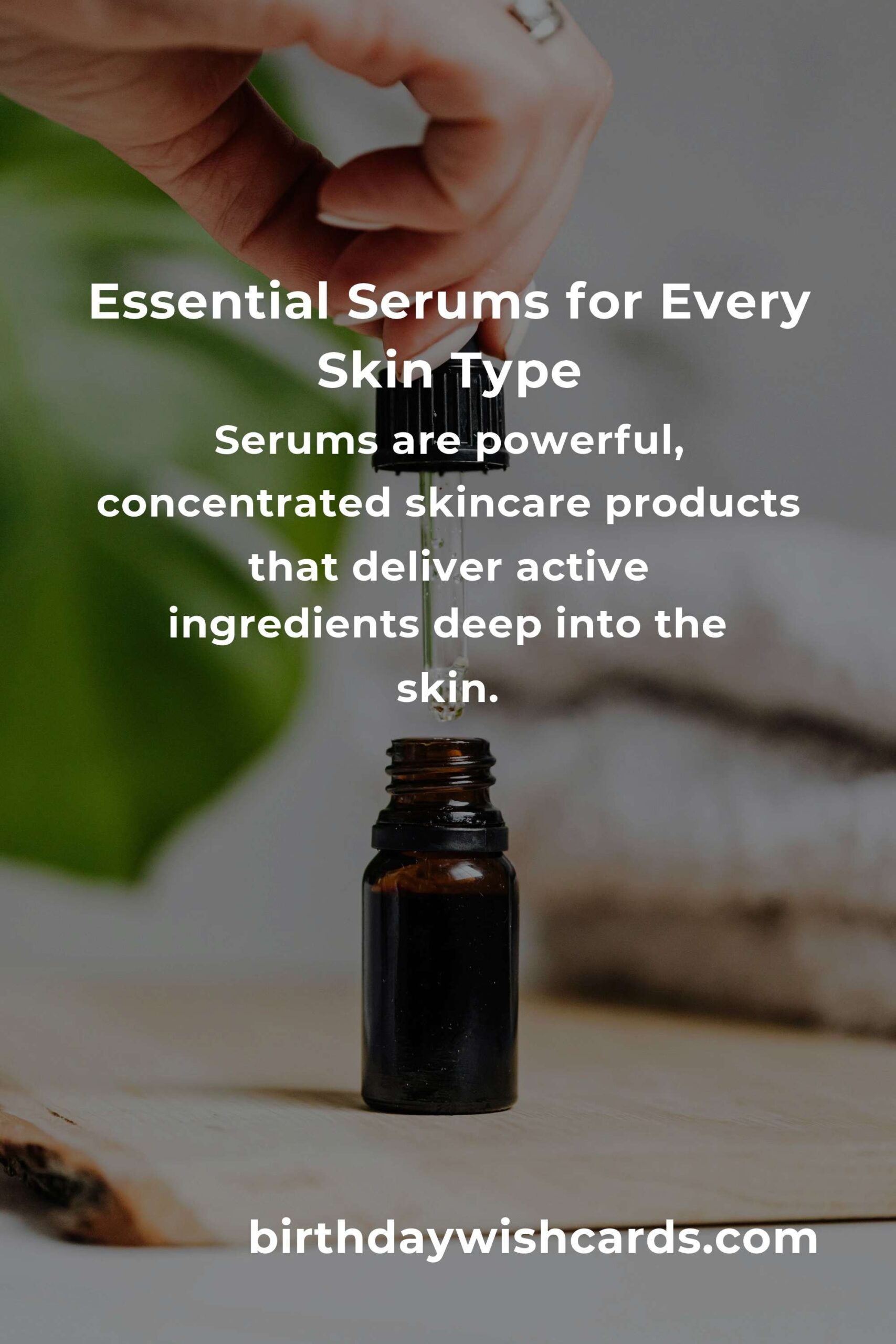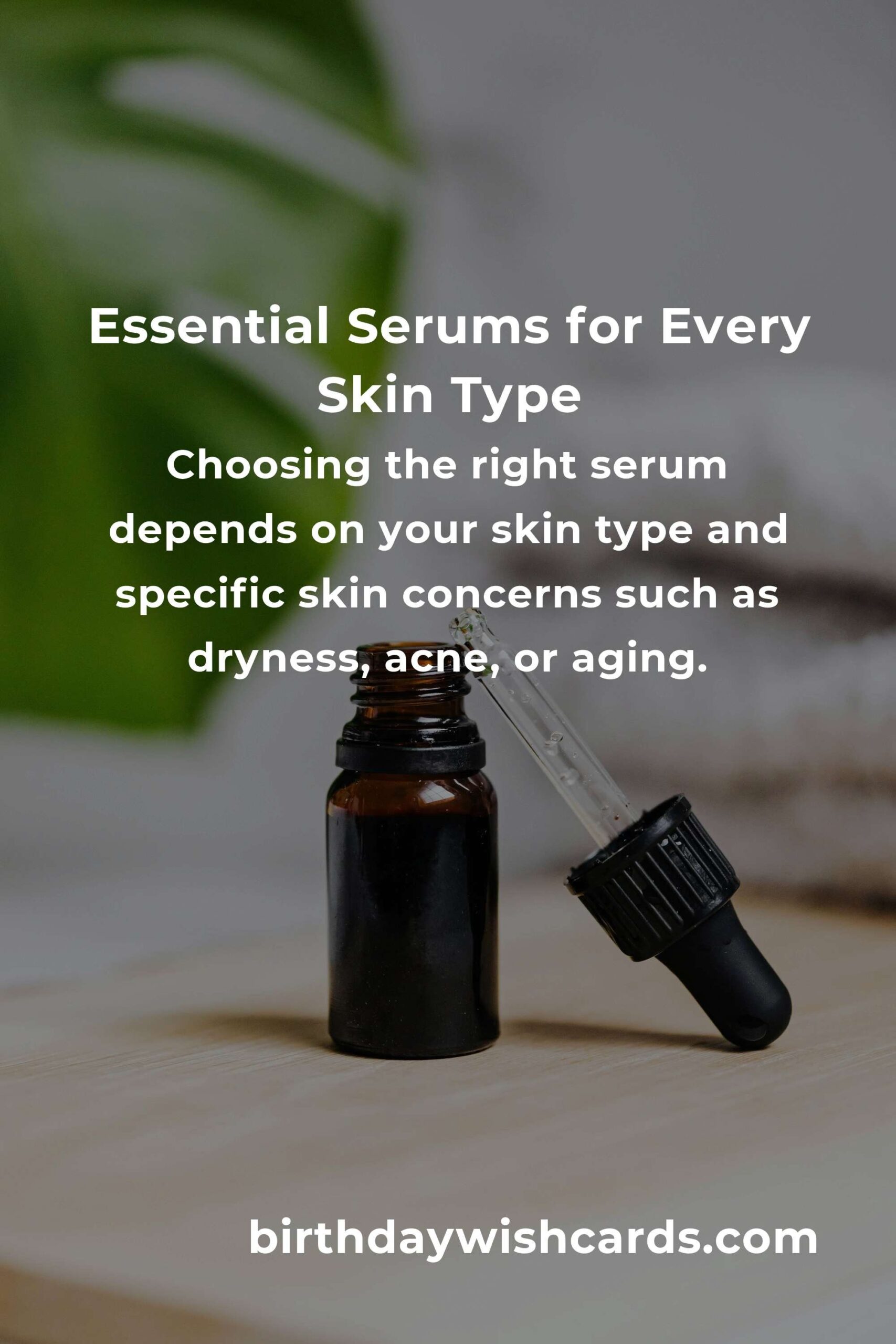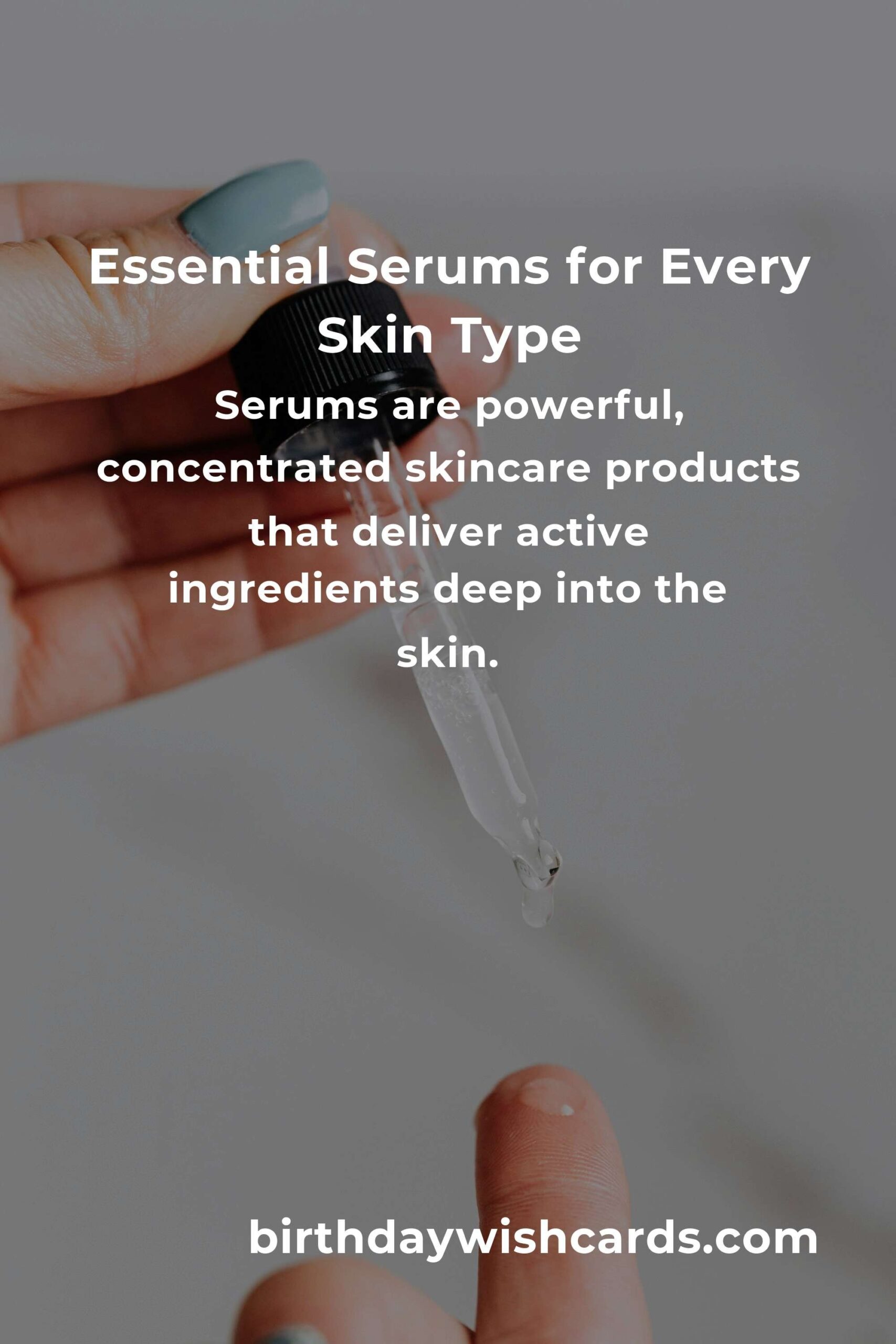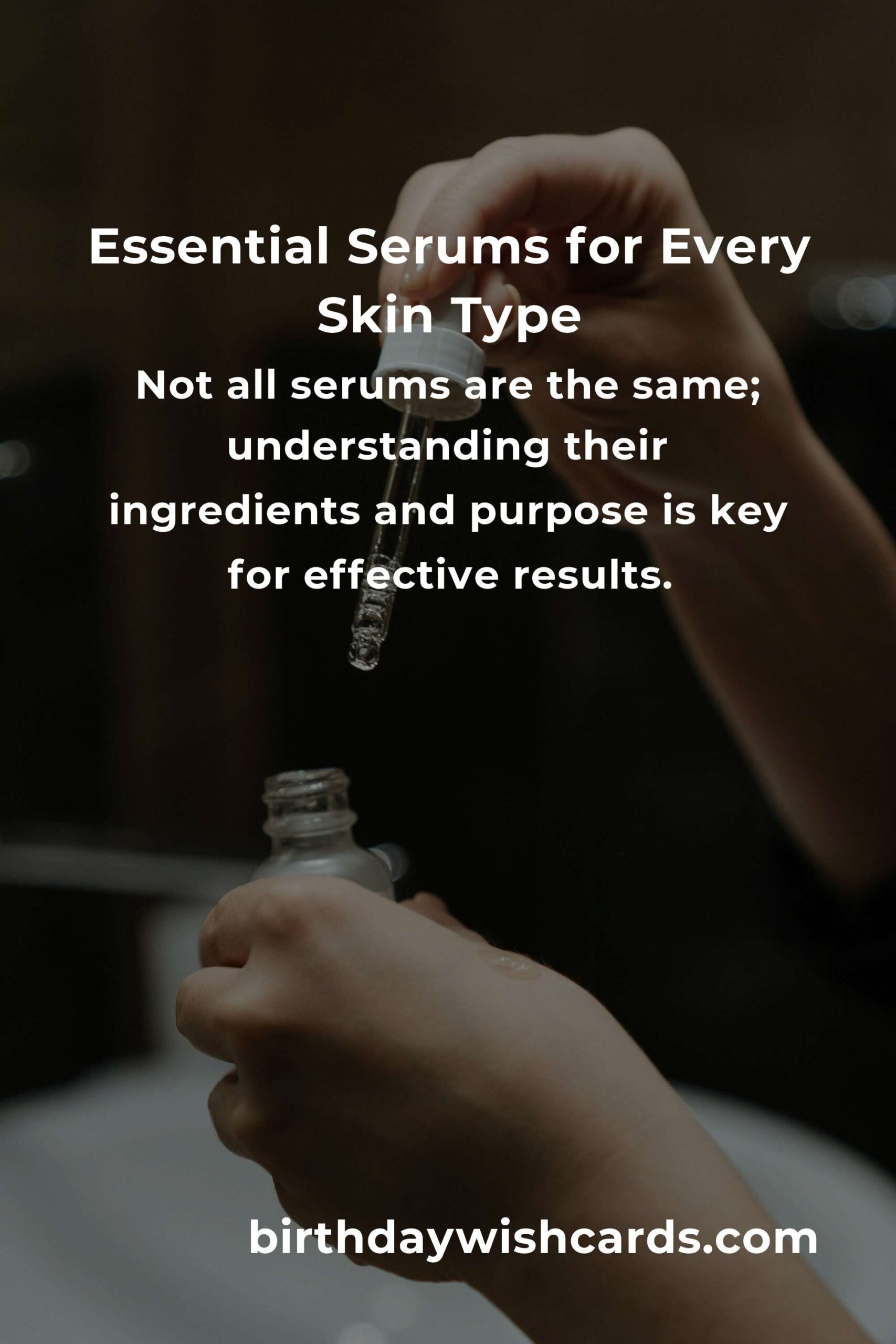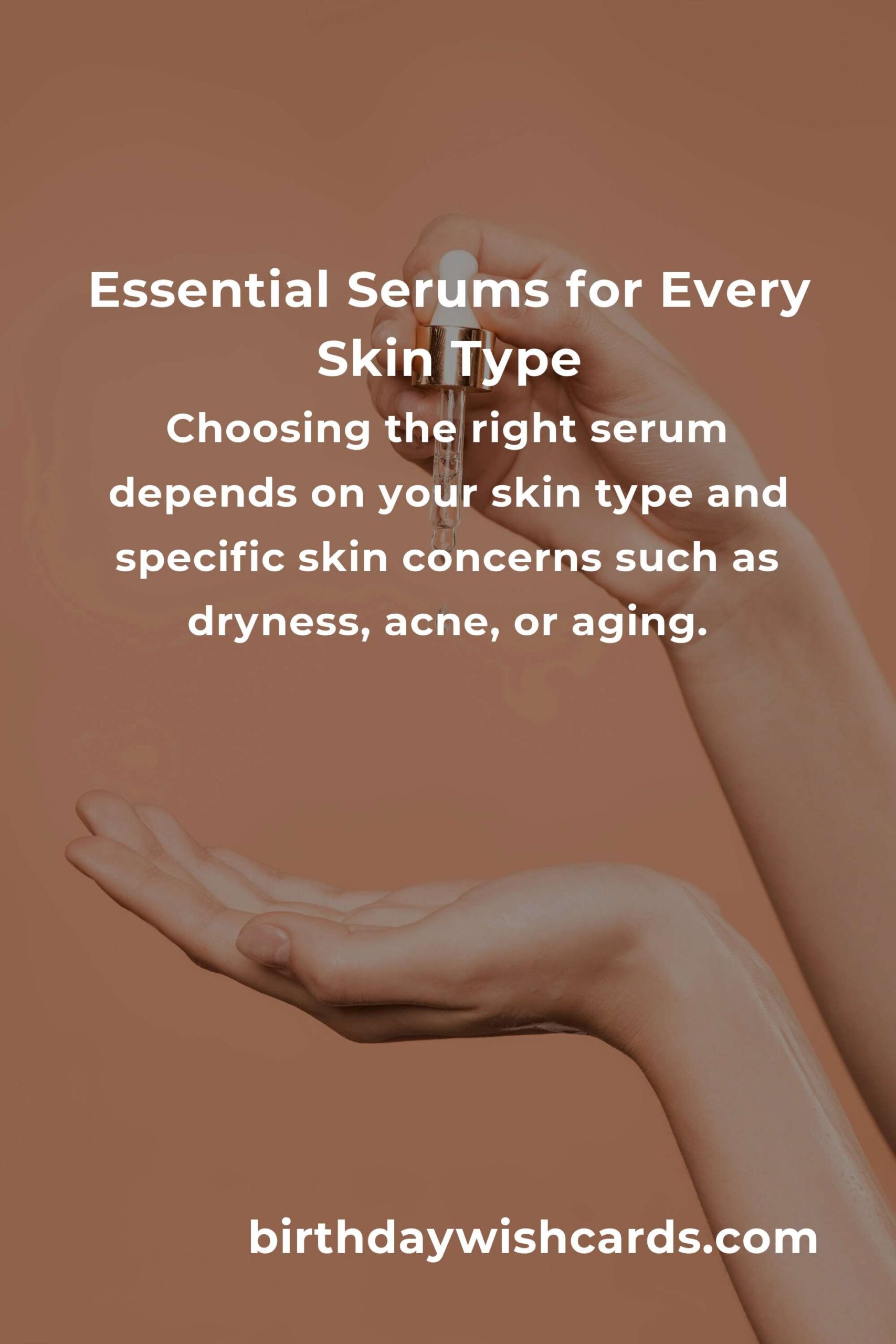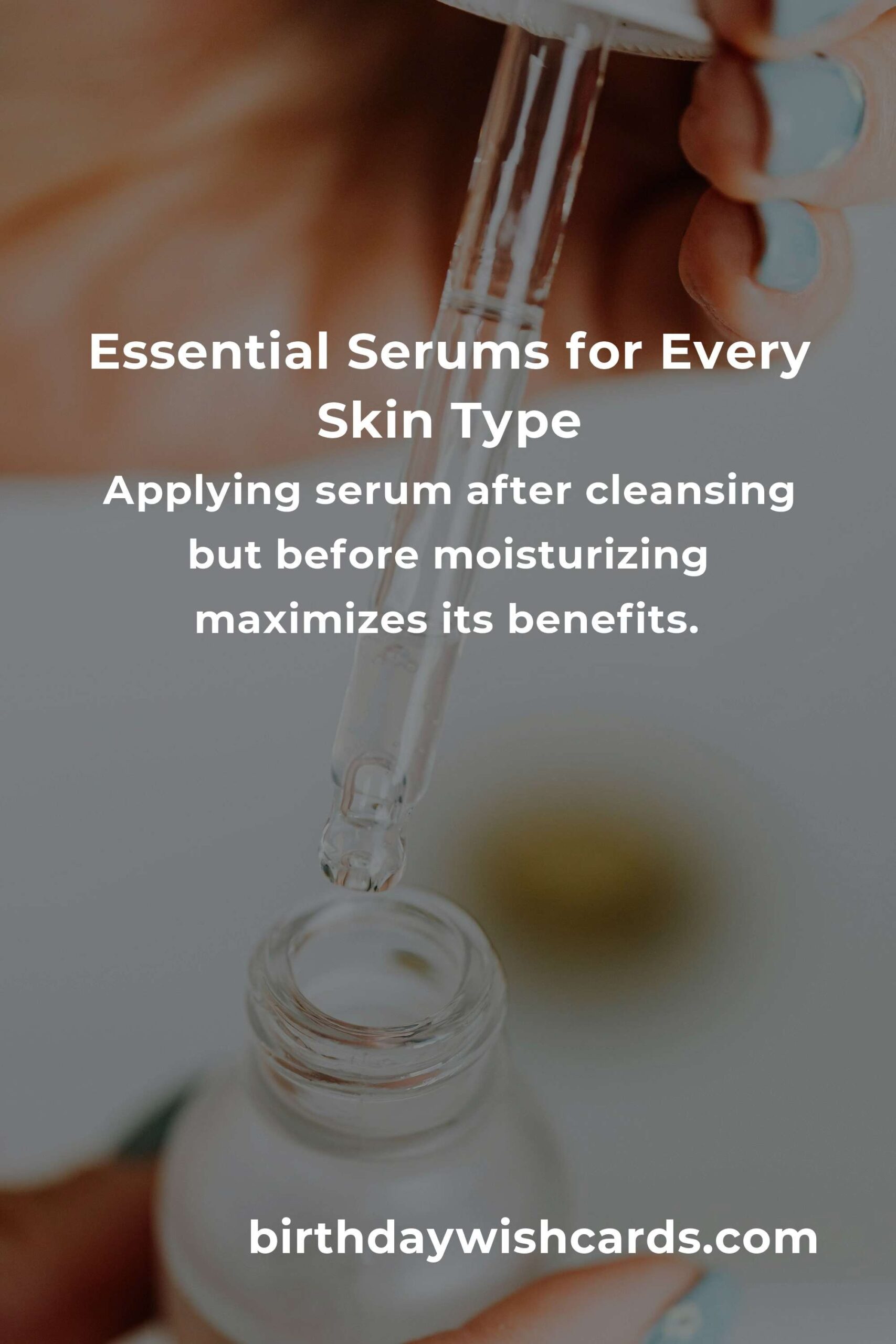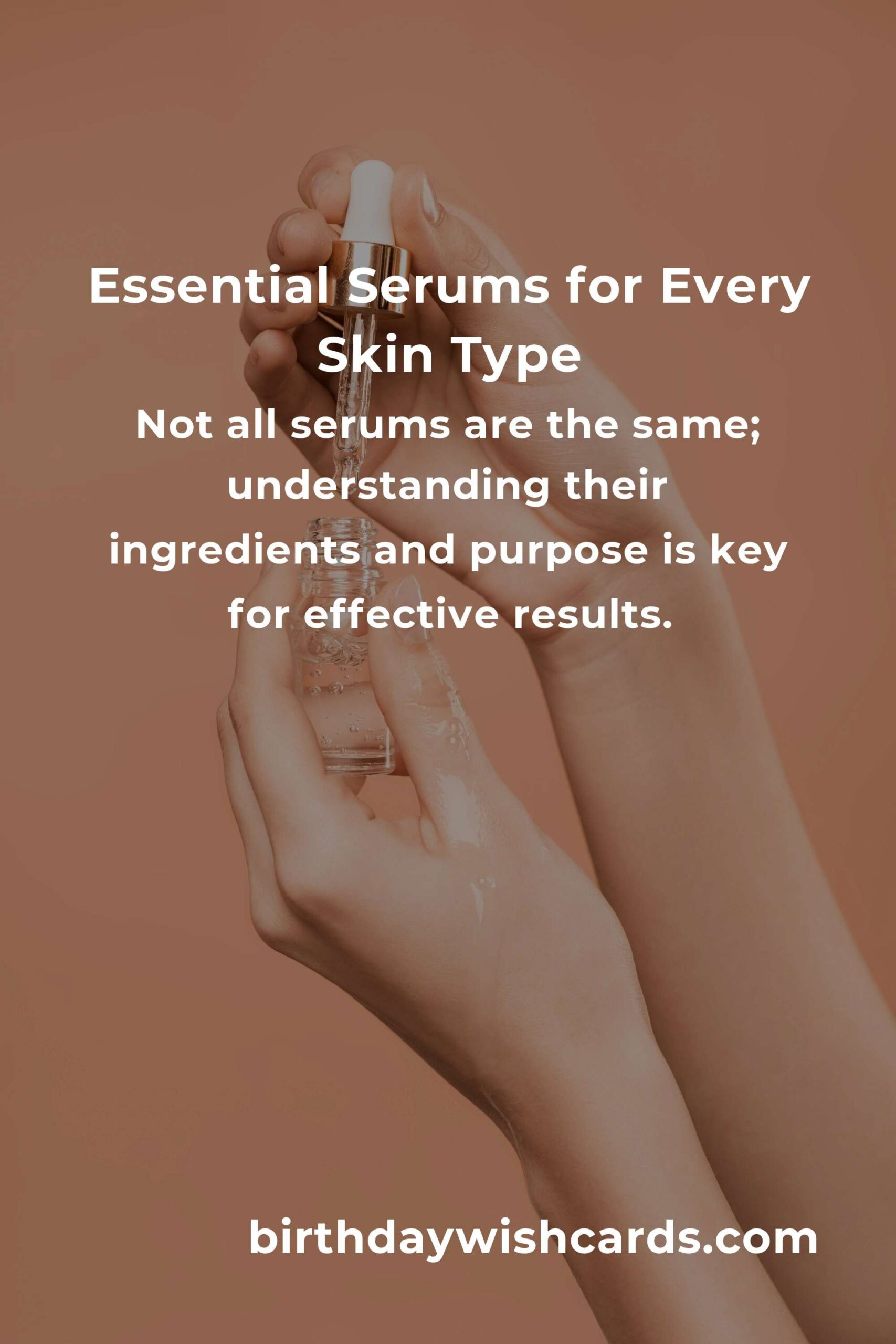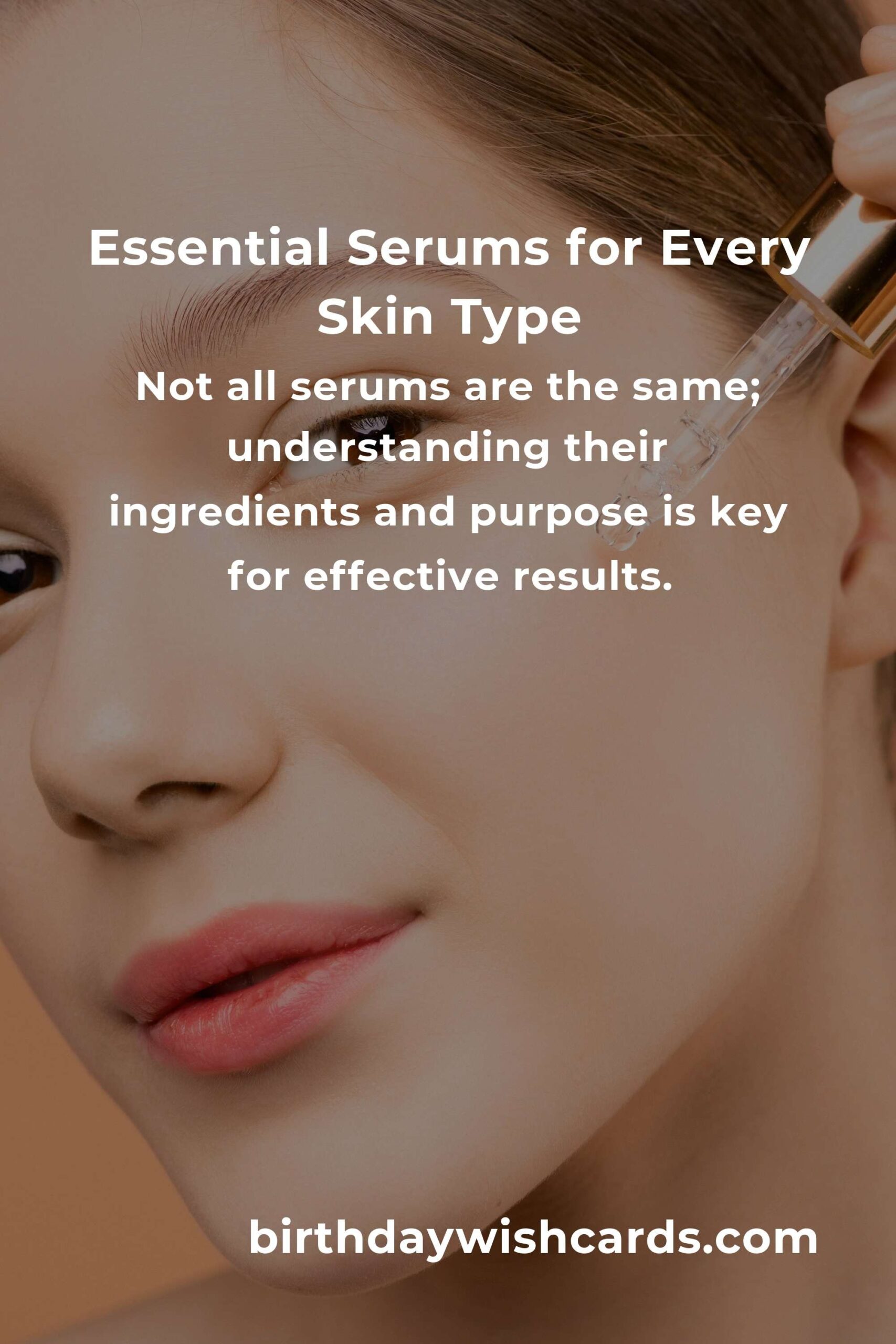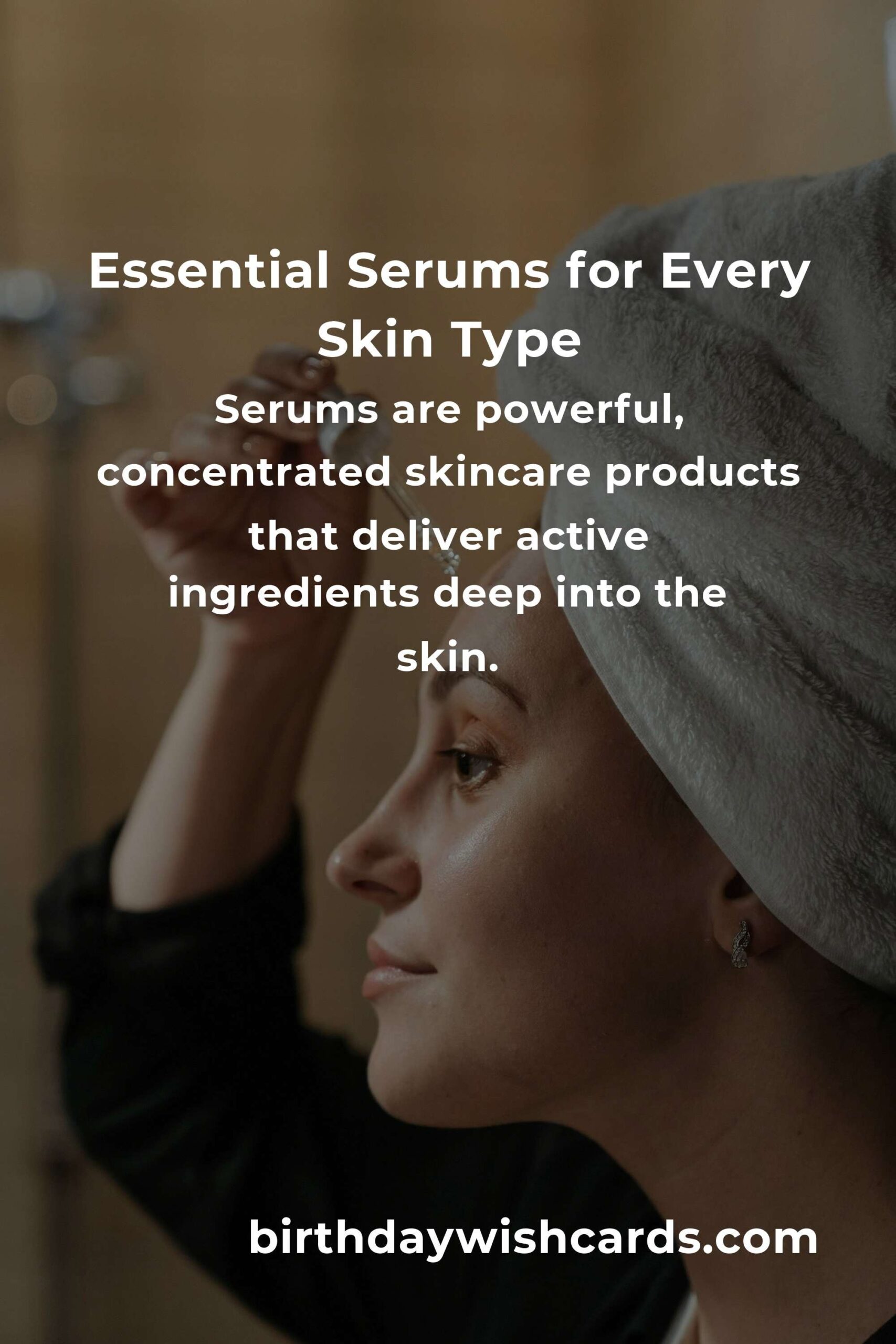
Are you curious about serums but feel overwhelmed by the choices and advice floating around online? You’re not alone. Serums have become a staple in modern skincare routines, but their purpose, application, and benefits can seem confusing, especially for beginners. In this comprehensive guide, we’ll break down everything you need to know about serums—from what they are and how they work, to choosing the right serum for your skin and maximizing their benefits.
What Is a Serum?
A serum is a lightweight, fast-absorbing skincare product designed to deliver concentrated active ingredients deep into the skin. Unlike moisturizers, which focus on hydration and forming a barrier, serums target specific skin concerns such as fine lines, dullness, dark spots, and acne. Because of their high potency, a little goes a long way, making serums a powerful step in any skincare routine.
Key Differences Between Serums and Other Products
So, what sets serums apart from toners, moisturizers, or creams?
- Texture: Serums are thinner and more concentrated than creams or gels.
- Absorption: They penetrate deeper into the skin because of their small molecular structure.
- Purpose: Serums deliver active ingredients (like vitamins, antioxidants, and acids) directly to skin cells, targeting specific issues.
Common Types of Serums
Not all serums are created equal. Here are some of the most popular types you’ll encounter:
- Hydrating Serums: These typically contain hyaluronic acid or glycerin to boost skin moisture levels.
- Brightening Serums: Packed with vitamin C, niacinamide, or licorice extract to address uneven skin tone and dullness.
- Acne-Fighting Serums: Include salicylic acid, tea tree oil, or retinol to combat breakouts and inflammation.
- Anti-Aging Serums: Focus on reducing fine lines, wrinkles, and other signs of aging, using ingredients like retinol, peptides, and antioxidants.
- Exfoliating Serums: Utilize alpha-hydroxy acids (AHAs) or beta-hydroxy acids (BHAs) to slough off dead skin cells and reveal a brighter complexion.
How to Choose the Right Serum for Your Skin Type
Picking the perfect serum can be daunting, but the key is understanding your skin’s unique needs. Here’s a helpful breakdown:
For Dry Skin
Look for serums with hyaluronic acid, glycerin, or squalane to lock in moisture. Ingredients like ceramides and panthenol are also beneficial.
For Oily or Acne-Prone Skin
Seek out ingredients like niacinamide (to regulate oil), salicylic acid (for exfoliation), or retinol (to boost cell turnover). Lightweight, non-comedogenic formulas are ideal.
For Sensitive Skin
Gentler ingredients like chamomile, centella asiatica (cica), and madecassoside help soothe and repair. Fragrance-free and hypoallergenic formulas are safest.
For Combination Skin
A multifaceted approach is best. Choose serums that balance hydration and gentle exfoliation, like those combining hyaluronic acid with lactic acid or niacinamide.
For Mature Skin
Serums with retinol, vitamin C, peptides, and antioxidants can help reduce fine lines and protect from environmental stressors.
How and When to Apply Serum
One of the most common questions is how to use serums in your routine. Here’s a simple guide:
- Cleanse: Start with a gentle facial cleanser to remove impurities.
- Tone (optional): Apply toner if you use one, to balance your skin’s pH and prep for absorption.
- Serum: Take 2-4 drops of serum and gently press or pat into your skin, focusing on problem areas. Wait 1-2 minutes to let it absorb.
- Moisturizer: Apply your usual moisturizer to lock in the active ingredients and hydrate your skin.
- Sunscreen (morning): Always finish your morning routine with a broad-spectrum SPF.
Serums are typically used once or twice a day, depending on their ingredients and your skin’s tolerance. Morning is ideal for antioxidant or brightening serums, while retinol serums should be reserved for nighttime due to potential sun sensitivity.
Common Serum Ingredients and Their Benefits
| Ingredient | Main Benefit |
|---|---|
| Vitamin C | Brightens complexion, fights free radicals |
| Hyaluronic Acid | Hydrates and plumps skin |
| Niacinamide | Reduces redness, regulates oil, improves tone |
| Retinol | Boosts cell turnover, softens wrinkles |
| Peptides | Stimulates collagen for firmness |
| Salicylic Acid | Clears pores, reduces acne |
| Alpha Arbutin | Lightens dark spots |
Common Myths About Serums
Let’s dispel a few misconceptions:
- Myth 1: Serums are only for anti-aging.
Truth: There are serums for hydration, acne, and brightening too. - Myth 2: You don’t need a serum if you use a moisturizer.
Truth: Moisturizers and serums serve different functions—serums deliver actives, moisturizers lock in hydration. - Myth 3: More serum equals better results.
Truth: Overusing active ingredients can harm your skin. Use only as directed.
Essential Tips for Serum Success
- Introduce new serums gradually to monitor any adverse reactions.
- Patch test before committing to daily use.
- Store serums, especially those with vitamin C, away from sunlight and heat to prevent ingredient breakdown.
- Always read the instructions—some serums may interact negatively with others (for example, retinol and vitamin C are often not used together in one routine).
FAQs About Serums
Can I use more than one serum?
Yes, but not all serums are compatible. Layer from thinnest to thickest, starting with water-based, then oil-based serums. Avoid mixing potent actives unless recommended by a dermatologist.
What’s the difference between day and night serums?
Day serums often feature antioxidants like vitamin C for protection against environmental damage, while night serums typically have retinol or acids that are best used away from sunlight.
How long does it take to see results?
Initial improvement is often visible within 2–4 weeks, but significant changes (especially for anti-aging or hyperpigmentation concerns) may take three months or more.
Are serums safe for all ages?
Most serums are appropriate for adults of all ages but should be chosen according to skin need rather than age. Teens with acne should choose gentler, non-comedogenic formulas.
Building a Simple Skincare Routine with a Serum
If you’re a true beginner, start simple:
- Cleanser
- Hydrating or targeted serum
- Moisturizer
- Sunscreen (morning only)
This routine ensures your skin receives the nourishment and protection it needs without becoming overwhelmed by too many steps or actives.
Conclusion: Making Serum Work for You
Serums can be a transformative addition to your skincare routine, providing targeted solutions for an array of skin concerns. By understanding your skin’s needs, choosing the right ingredients, and applying them correctly, serums can help you achieve healthier, brighter, and more youthful-looking skin. Start slow, be consistent, and enjoy the journey to your best skin ever!
Serums are powerful, concentrated skincare products that deliver active ingredients deep into the skin.
Choosing the right serum depends on your skin type and specific skin concerns such as dryness, acne, or aging.
Applying serum after cleansing but before moisturizing maximizes its benefits.
Not all serums are the same; understanding their ingredients and purpose is key for effective results.
Introduce new serums gradually and follow instructions to avoid irritating your skin.
#serum #skincare #beauty #beginners #glowingskin

